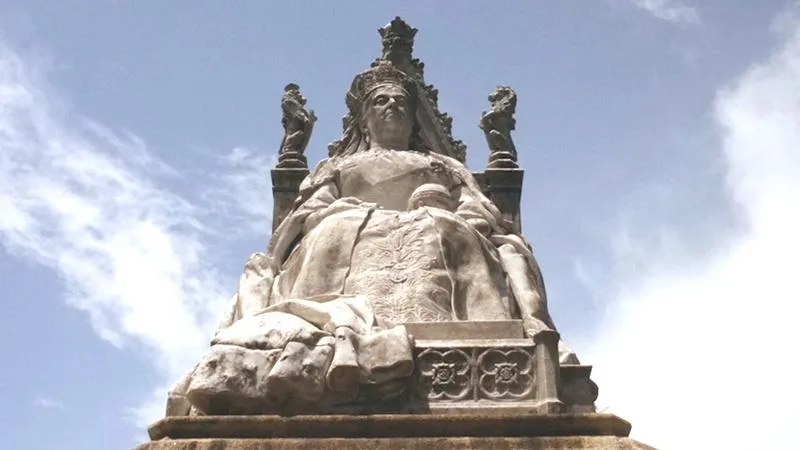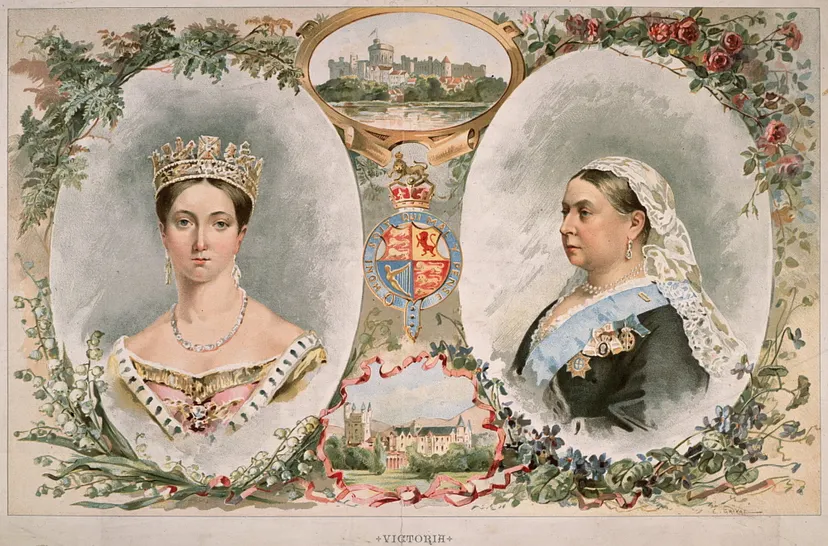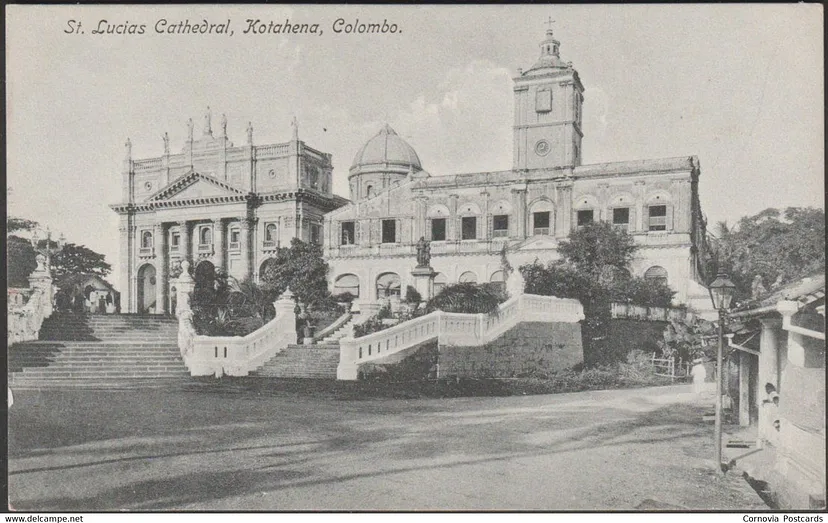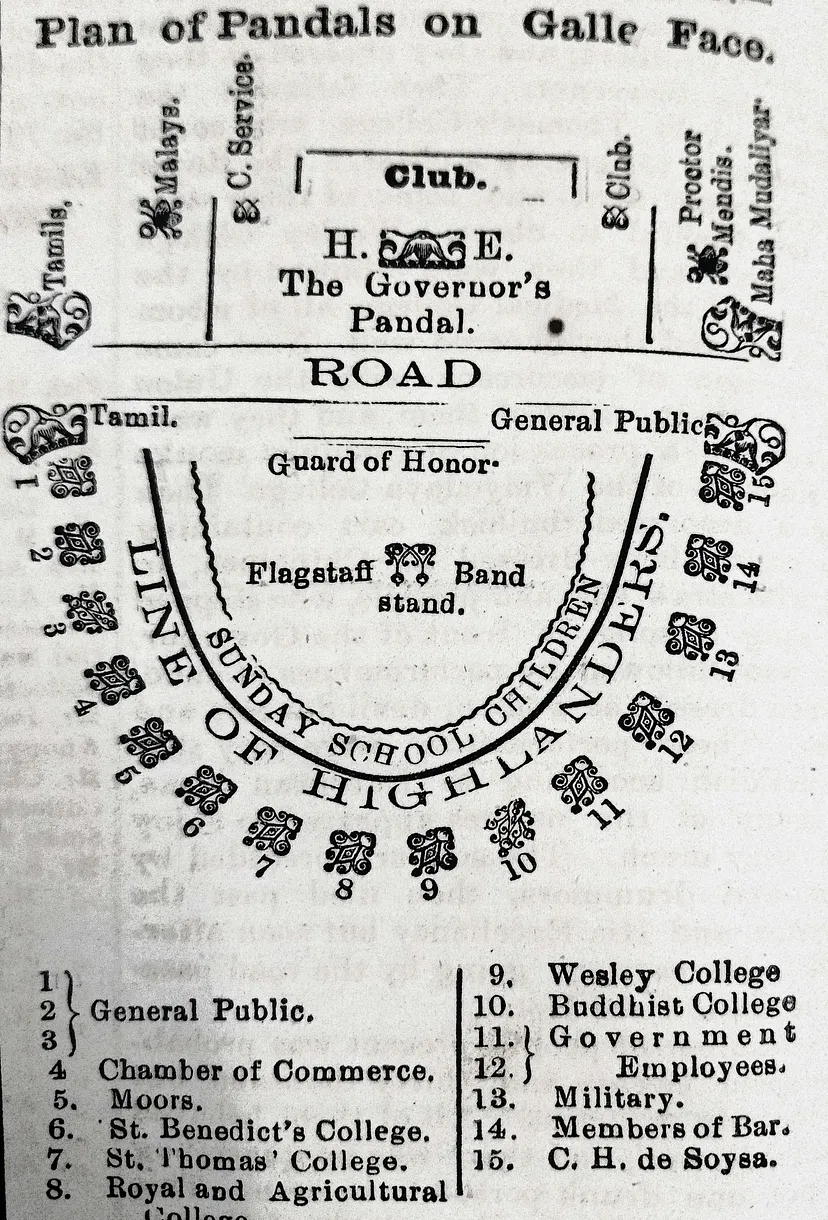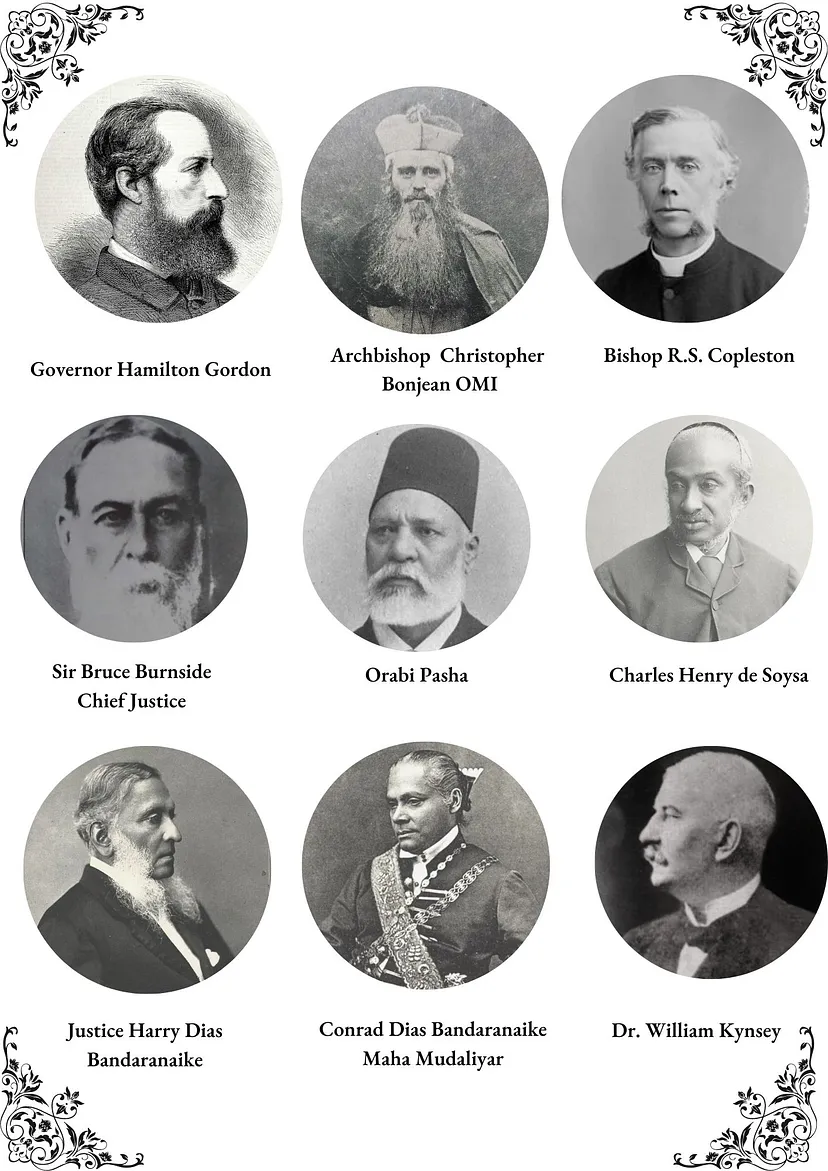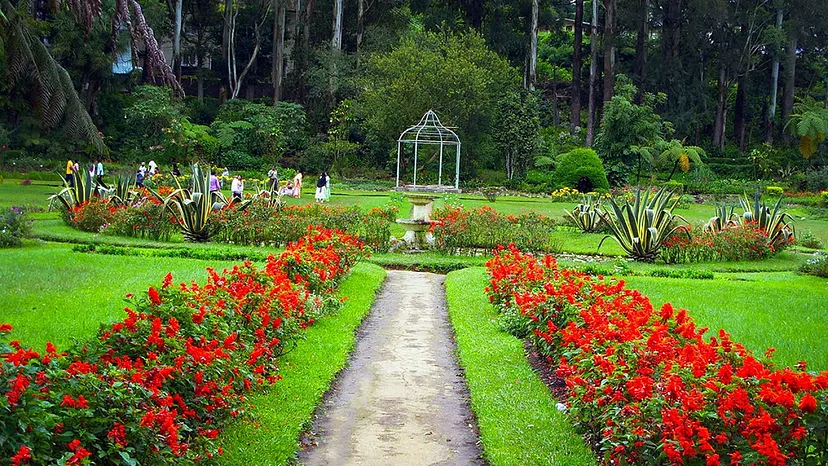When Ceylon celebrated the Golden Jubilee of Queen Victoria-By Avishka Mario Senewiratne and Nilantha Perera
Statue of Queen Victoria in Colombo
Since the fall of Kandy in 1815, Ceylon significant for its innumerable resources and pivotal geographic location, became a colony of the British. Queen Victoria was British Ceylon’s 4th monarch after George III, George IV, and her uncle William IV. However, unlike her predecessors or successors, the impact Victoria created in Britain and her colonies was so paramount that even her 64-year reign has been dubbed ‘the Victorian Era’. She is associated with Britain’s great age of industrial expansion, economic progress and especially the territorial expansion of the empire. When Victoria ascended to the throne in 1837, Britain was largely a trade power. During her rule, Britain became a mighty empire and the world’s most powerful nation. Victoria remained popular in Britain as well as her colonies, throughout her reign. In 1887, the British Empire celebrated Victoria’s Golden Jubilee. Ceylon too, a stronghold of the British Raj celebrated the Queen’s Golden Jubilee with all the pomp and circumstance.
Queen Victoria, shown at 18 in 1837 when she was crowned, and at 68 for her Golden Jubilee in 1887. Credit: Hulton Archive/Getty Images
The principal event of the celebrations was to be held at the Galle Face Green on June 28, 1887. Though there were apprehensions that the planned ceremony may be marred by the inclemency of weather, the day went out to be cloudy and breezy, after a short rainfall sparingly enough to polish the floors. This enabled a pleasant show for outdoor entertainment instead of the usual tropical conditions. The grounds were filled with people of all classes and races, numbering up to around twenty to thirty thousand. This is a guesstimate based on what the broadsheets of Colombo reported.
The event began with the Military Review at 7.00 am in front of the Military Hospital and its surroundings. Over 800 commissioned and non-commissioned officers and the Royal Artillery took part in it. With the arrival of Governor Gordon and the Major General, the customary salute and inspection took place. After its completion, the Major General ordered to fire feu-de-joie, which was done in good style. This was followed by three hearty cheers for the Queen by the soldiers.
Next in line was a well-planned and well-executed march past in the quarter column, while drums and bagpipes were played. After the Volunteers left the ground, the Artillerymen and the Highlanders joined in and the Major General presented his address. With a slight drop of rainfall, the spectators believed that the proceedings were wrecked. However, the rain was short-lived and hopes were mighty up again.
That afternoon, a number of thanksgiving services were conducted in the leading places of worship in Colombo. Archbishop Bonjean celebrated High Mass at the Kotahena Cathedral, and the singing of Te Deum with Benediction took place at St. Philip Neri’s Church, Pettah. Other services for the Anglicans were held at St. Peter’s Cathedral, and for the Presbyterians at St. Andrew’s Church, Wolvendaal church and the Fort Chapel, to name a few.
Plan of Pandals for the Ceremony
That evening the principal ceremony took place. The Governor’s Pavilion took centre stage which was located in front of the Colombo Club. Across the road were the other pandals consisting of different schools, nationalities and institutions. Sunday-school children of various protestant faiths, accompanied by teachers were placed in front of the Governor’s pandal with soldiers before and behind them. John Ferguson of the Ceylon Observer commented on the pandals as follows:
“Nothing can exceed the graceful beauty of such erections when the Sinhalese and the Tamils set themselves to do their best; loops of plantain and young coconut leaf, green moss and fern, and yellow olas, and clusters of coconuts, oranges, or other fruits, offer the best possible material for covering the bamboo framework that may be put together in a night”.
Round the foot, the flagstaff of the Royal Standard was a raised bandstand which was occupied by the Volunteers’ band under the direction of Ernst Luschwitz.
At 4.00pm the Governor Arthur Hamilton-Gordon, arrived in an open carriage accompanied by the Maha Mudaliyar Conrad Dias Bandaranaike, Mr. W. M. Gordon, his acting Private Secretary, and Captain Christopher, his Aide-decamp. Governor Gordon was received by the Chief Justice, Sir Bruce Burnside and by the members of the Legislative and Executive Councils.
The Governor’s Pavilion was occupied by the Archbishop Christopher Bonjean OMI, the Chief Justice and Lady Burnside, Justices L.B. Clarence and Harry Dias Bandaranaike, the Hon. Mr. Rawonseroft, the Anglican Bishop R.S. Copleston, the Director of Public Instruction and Mrs. Green, Dr. William R. Kynsey, Chief Medical Officer of Ceylon, the official and unofficial members of the Legislative Council, the Foreign Consuls, Fr. Dominique Pulicani OMI, the principal Military Officers, and a number of other prominent ladies and gentlemen.
Having taken his place, the Governor readout the record of Her Majesty’s Reign and the proclamation to the people of Ceylon. The message was simultaneously read in English, Sinhalese and Tamil in respective pandals. Governor Gordon made the following three proclamations that day. The first was to thank God for the mercies during her rein and for all her people in the dominion. The second was to restore Crown lands taken during the Grain Commutation Ordinance, back to its former possessors. The third was to give clemency for 137 prisoners who were 1). In prison for debts due to the crown. 2). All women who were not undergoing imprisonment for very serious offences. 3). Prisoners whose sentences of imprisonment are shortly to expire. The Royal Standard was then run up and a salute of fifty guns were fired followed by the national anthem “God Save the Queen”.
Thereafter, a large procession was followed. The order of the procession was as follows:
1. The Sunday school students, accompanied by their teachers.
2. Malays preceded by a decorated bullock cart containing a party of Malay singers.
3. Orabi Pasha, the famed Egyptian exiled in Ceylon, and suite followed, giving the Governor a military salute in passing and they were followed by a procession of Moor men.
4. Students of St. Benedict’s Institute, accompanied by some of the Christian Brothers.
5. Students of S. Thomas’s College.
6. Students of Royal College.
7. Students of Wesley College
8. Students of the Medical College, all of whom bore flags.
9. Procession of lascoreens with the Union Jack borne in front of them.
10. Buddhist monks and students of the Vidyodaya College.
11. Decorated bullock cart containing nine native boys dressed as Chinamen in blue with straw hats and pigtails, who stopped and sang a song in front of the Governor.
12. Performances of dancing men dressed as women, devil dancers and others.
13. The soldiers, preceded by pipers and drummers.
The Ceylon Catholic Messenger of July 1, 1887 commented on the ceremony as follows:
“These performances were very silly and childish according to European ideas, but many of the natives appeared to enjoy them very much”.
After the procession was over, the Governor left in his carriage, ending the ceremony. The evening was concluded with a fabulous firework display and illuminations, brightening the wide Colombo firmament. The Queen’s House, offices of Volkart Brothers and Aitken Spence & Co., and the Mercantile Bank were illuminated with lanterns creating a beautiful spectacle. Furthermore, the Agency of the French mail steamers presented a fine sight along with the other vessels in the harbour. The Ceylon Examiner commented on the day as follows:
“Never did the Galle Face Green look prettier and never did so large an assemblage gather on it.”
On the jubilee day, a large number of poor in towns and villages were fed, each getting a measure of rice and five cents (equivalent to one penny). That very year to honour and commemorate Victoria and her 50th year on the throne, Victoria Park in Nuwara Eliya was built. Victoria would remain on the throne for 14 more years.
Victoria Park, Nuwara Eliya
What is truly significant about the celebration, which has now been forgotten by many is that it made a striking resemblance to the very first Independence Day celebration in 1948. Many scholars such as Nira Wickramasinghe have stated that this celebration was the script of the celebrations of 1948. There were hardly any changes between the celebration of the monarch who ruled the colony for fifty years and the celebration of being independent by the same colonial power. There existed the same ingredients of the former such as the Military Review, religious ceremonies, speeches and acts of charity.
“Great events make me quiet and calm; it is only trifles that irritate my nerves”
– Queen Victoria
References
Times of Ceylon, 1887 June-July
The Ceylon Catholic Messenger, 1887, June-July
The Ceylon Catholic Examiner, 1887, June-July
Ferguson, John, (1887) Ceylon in the Jubilee Year, London & Colombo
Wickramasinghe, Nira, (2006) Sri Lanka in the Modern Age: A History of Contested Identities, London
(Initially published in The Ceylankan, Journal 101, Volume 26, Number 1, February 2023, pp. 18–20)


